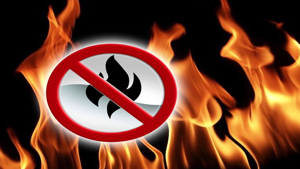Cattle burps and manure produce methane, a planet-heating greenhouse gas which is up to 80 times more potent than CO2over a 20-year time scale. Livestock generate around 30% of global methane emissions, two-thirds of which come from cattle used for meat or milk production.
The Scottish dairy calf has been hailed by vets and scientists as a “hugely significant” moment for reducing the industry’s carbon footprint.
Accelerating methane reduction
Hilda is the result of combining three existing technologies, said Mike Coffey, a professor at Scotland’s Rural College, a university focusing on sustainability and partner on the project.
These are the ability to predict a cow’s methane production based on its DNA, extract eggs at a younger age than before and fertilize them with semen that has been sorted for sex.
“You mix those three [technologies] together, and that enables you to accelerate female selection for reduced methane, one calf at a time,” said Coffey, adding that by doing the same thing again and again over a period of years would lead to a low methane-emitting herd.
Rob Simmons, from the Paragon Veterinary Group, another partner in the project, told PA Media that “genetic improvement in methane efficiency” would be “key to continuing to provide nutritious food to the public, while controlling the impact of methane emissions on the environment in the future.”
The Langhill herd is the focus of the world’s longest-running livestock genetics project and selects cows on the basis of factors such as health, fertility, productivity and feed intake.
Traditional selection based on these traits has so far helped reduce methane emissions by around 1% per year said Coffey. He added this new technique is expected to increase those reductions by 50% each year which would amount to a 30% overall cut in emissions over the next 20 years.
A Canadian study published last year also suggested farmers selecting and breeding cows for methane efficiency could achieve reductions of up to 20-30% in emissions by 2050.
Scaling up cow methane reduction
Overall, there are 1.5 billion cattle in the world, an estimated 270 million of which are dairy cows. In 2022, the global dairy industry was worth just under $900 billion.
The process of producing a cow like Hilda currently costs around twice as much as the economic value of the animal, said Coffey.
“It wouldn’t be profitable [for farmers] as it currently stands. But the point of this project was to demonstrate that it can work.”
He says the next steps are to explore what financial support might be available to help bring it to scale. “What levers do government have to enable them to alter the economic environment to make it cost effective for farmers to do it just like they did with electric cars.”
The shift to electric cars is also a good analogy for the speed of change in cow methane reduction, said Coffey. “There’ll be a point which they stop producing petrol cars, but the existing petrol cars will still carry on and have a life, and that’s the same as the herd of cows.”
However, Coffey emphasizes the project is part of a much broader wave of scientific endeavor.
In addition to those using genetic selection, other projects are looking into the impact of feed additives such as seaweed or harvesting methane produced from their manure into biogas that can fuel vehicles or household heating.
The Langhill herd has also been used in studies exploring how dietary changes and fertilizer use impact the greenhouse gas emissions produced by dairy farming.
“Most other countries in the world are doing the same thing. It’s like an international race to reduce methane emissions from ruminants as fast as practically possible,” said Coffey.
Is selective breeding enough?
Methane emissions are rising faster in relative terms than any other greenhouse gas, according to a recent study.
Scientists have stated that technological improvements to farm management can’t reduce these emissions at the scale needed to achieve theParis Agreement goalof limiting global heating to 1.5 degrees Celsius (2.7 degrees Fahrenheit).
They argue the only way to achieve this is through significantly reducing meat and dairy production and shifting to more plant-based diets.
The meat and dairy industries contribute between 12-20% of global greenhouse gas emissions and account for 60% of emissions coming from food systems. This is largely driven by carbon dioxide released through clearing forests for pasture and feed as well as methane from livestock.
Cutting down on meat and dairy could drop global dietary emissions by 17% according to one study.
Scientists say a 45% reduction in methane emissions by 2030 could help avoid 0.3C of warming.
“By 2030 alone, on a business-as-usual trajectory, emissions from the livestock sector will take almost 50% of the GHG emissions budget consistent with limiting global temperature rise to 1.5C,”stated a recent report from Harvard Law School which collated insights from over 200 climate and agricultural experts.
Despite the growing popularity of plant-based alternatives — such as almond and oat milk — in some parts of the world, milk and dairy products are consumed by around 6 billion people around the world, and demand is expected to grow steadily over the next decade, according to the UN’s Food and Agricultural organization (FAO).
Global meat consumption is also predicted to increase 14% by 2030.
Edited by: Tamsin Walker
#IVF #calf #reduce #dairys #global #emissions








Leave a Reply